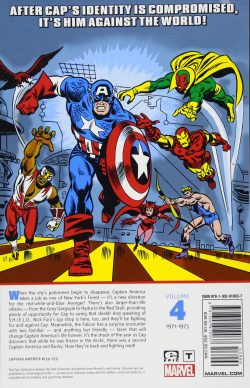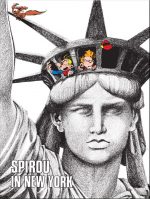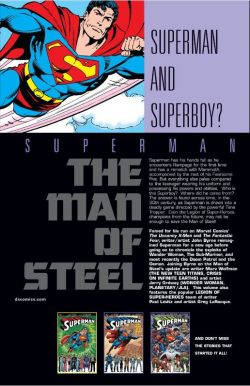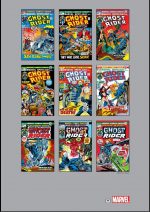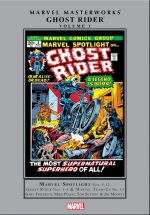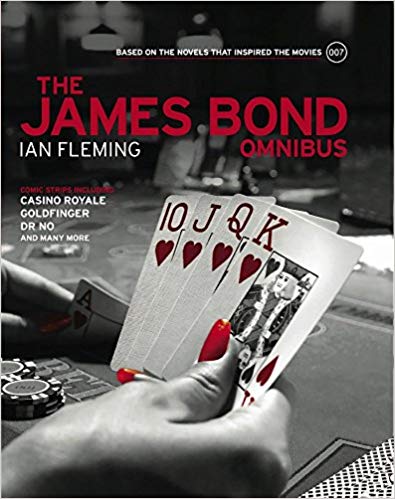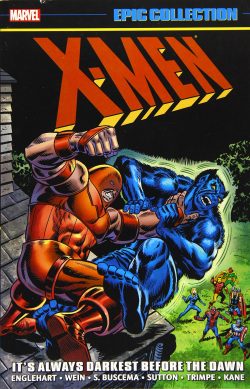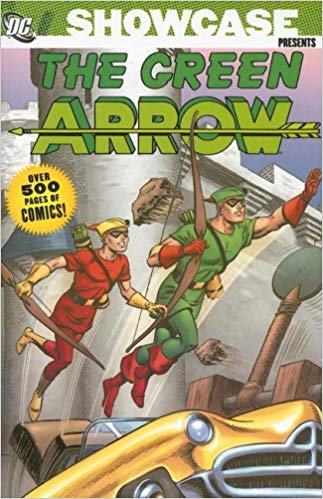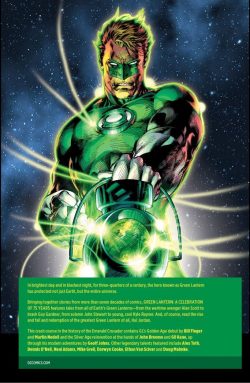

By Martin Nodell, Bill Finger, Alfred Bester, Robert Kanigher, John Broome, Gardner Fox, Dennis O’Neil, Steve Englehart, Keith Giffen, J.M. DeMatteis, Ron Marz, Judd Winick, Geoff Johns, Paul Reinman, Alex Toth, Gil Kane, Neal Adams, Mike Grell, Joe Staton, Kevin Maguire, Darryl Banks, Randy Green, Ethan Van Sciver, Darwyn Cooke, Doug Mahnke & various (DC Comics
ISBN: 978-1-4012-5819-1 (HB)
Now a cornerstone of the DC Universe the many heroes called Green Lantern have waxed and waned over the decades and now feels much more Concept than Character.
This stunning compilation – part of a dedicated series introducing and exploiting the comics pedigree of veteran DC icons and concepts – is available in hardback and digital formats and offers an all-too-brief but astoundingly enticing sequence of snapshots detailing how assorted Emerald Gladiators have battled evil and injustice whilst entertaining millions and generations.
Collecting material from All-American Comics #16, Comic Cavalcade #6, Green Lantern volume 1 #30, Showcase #22, Green Lantern volume 2 #7, 11, 16, 40, 59, 76, 87, 188, The Flash #237-238, 240, Justice League #1, Green Lantern volume 3 #50, 51, Green Lantern /Green Lantern #1, Green Lantern: Rebirth #1, Green Lantern Secret Files and Origins 2005, #1 and Green Lantern #0 (cumulatively covering July 1940 to November 2012), the groundbreaking appearances selected are all preceded by a brief critical analysis of the significant stages in his/their development, beginning with Part I: The Green Flame Ignites 1940-1950…
The first Emerald Avenger debuted in the 16th issue (July 1940) of the company’s flagship title All-American Comics, just as superheroes started to take hold, supplanting newspaper strip reprints and stock genre characters in the still primarily-anthologised comicbooks.
Crafted by Bill Finger & Martin Nodell ‘Introducing Green Lantern’ reveals how ambitious young engineer Alan Scottonly survives the sabotage and destruction of a passenger-packed train due to the intervention of a battered old railway lantern. Bathed in its eerie emerald light, he is regaled by a mysterious green voice with the legend of how a meteor fell in ancient China and spoke to the people: predicting Death, Life and Power.
The star-stone’s viridian glow brought doom to the savant who reshaped it into a lamp, sanity to a madman centuries later and now promises incredible might to bring justice to the innocent and afflicted…
Instructing Scott to fashion a ring from its metal and draw a charge of power from the lantern every 24 hours, the ancient artefact urges the engineer to use his formidable willpower to end all evil: a mission Scott eagerly takes up by promptly crushing corrupt industrialist Dekker who callously caused wholesale death just to secure a lucrative rail contract.
The ring renders Scott immune to all minerals and metals, enabling him to fly and pass through solid objects but, as he battles Dekker’s thugs, the grim avenger painfully discovers that living – perhaps organic – materials such as wood or rubber can penetrate his jade defences and cause mortal harm…
The saboteurs punished, Scott resolves to carry on the fight and devises a “bizarre costume†to disguise his identity and strike fear and awe into wrongdoers…
The arcane avenger gained his own solo-starring title little more than a year after his premiere and also appeared in anthologies such as Comics Cavalcade, All Star Comics and others for just over a decade. From those hectic heydays (and specifically Comic Cavalcade #6, Spring 1944) ‘They Are Invincible’ sees the hero and his comedy sidekick Doiby Dickles tracking thieves in fog and slip into a metaphorical quandary as their writer Alfred Bester (but not & illustrator Paul Reinman) becomes a reality-warping part of the adventure…
Like most first-generation superheroes, the masked marvel faded away in the early1950s, having first suffered the humiliating fate of being edged out of his own strip and comicbook by his pet Streak the Wonder Dog…
Green Lantern volume 1 #30, cover-dated February/March 1948 cover-featured ‘The Saga of Streak’ by Robert Kanigher & Alex Toth as a noble, valiant canine (some very important people call them “Daw-uhgsâ€) tracks his missing owner/companion to the big city only to be gunned down by criminals. Saved by Green Lantern, they jointly rescue US intelligence agent Captain Sara Dale from deranged Dr. Malgoro and the grateful spy asks him to look after Streak until she returns from her next assignment. Within two issues the mutt was the lead feature, proving beyond doubt that the readers were losing interest in masked mystery men… at least for the moment…
A potted history of that interregnum follows in Part II: The Emerald Crusader 1959-1969 before a flash of green light heralded a bold new venture. After their hugely successful revival and reworking of The Flash, DC (or National Comics as they were) were keen to build on the resurgent superhero trend. Showcase #22 hit the stands at the same time as the fourth issue of the new Flash comicbook – #108 – and once again the guiding lights were Editor Julie Schwartz and writer John Broome. Assigned as illustrator was action ace Gil Kane, generally inked by Joe Giella, and the issue reveals how a Space Age reconfiguration of the Golden-Age superhero with a magic ring replaced mysticism with super-science.
Hal Jordan is a young test pilot in California when an alien policeman crashes his spaceship on Earth. Mortally wounded, Abin Sur commands his ring – a device which can materialise thoughts – to seek out a replacement officer, honest and without fear.
Scanning the planet, it selects Jordan and brings him to the crash-site. The dying alien bequeaths his ring, lantern-shaped Battery of Power and his professional vocation to the astonished Earthman.
In six pages ‘S.O.S Green Lantern’ establishes characters, scenario and narrative thrust of a series that would increasingly become the spine of DC continuity, leaving room for another two adventures in that premiere issue. Unlike the debut of The Flash, the editors were now confident of their ground. The next two issues of Showcase carried the new hero into even greater exploits, and six months later Green Lantern #1 was released.
In this new iteration Emerald gladiators are a universal police force (Jordan’s “beat†is Space Sector 2814), and having shown us other GLs, Broome surpassed himself with ‘The Day 100,000 People Vanished!’ (Green Lantern #7, August 1961) bringing the Guardians of the Universe into the open to warn of their greatest error: a renegade Green Lantern named Sinestro who, in league with evil Qwardians from an antimatter universe, had become a threat to our entire reality. This tense shocker introduced one of the most charismatic and intriguing villains in the DCU
Readers were constantly clamouring for more on the alien Corps Jordan had joined and ‘The Strange Trial of Green Lantern’ (#11, March 1962) introduces another half-dozen or so simply to court-martial Hal for dereliction of duty in a saga of cataclysmic proportions, after which issue #16 of Green Lantern volume 2 (October 1962) takes Jordan’s romantic triangle with his boss Carol Ferris and his own masked alter ego to a new level as ‘The Secret Life of Star Sapphire!’ introduces the star-roving alien women of Zamaron.
Readers of contemporary comics will be aware of their awesome heritage but for the sake of this review and new readers let’s keep that to ourselves. These questing females select Carol as their new queen and give her a gem as versatile and formidable as a power ring, and a brainwash make-over too.
Programmed to destroy the man she loves, Star Sapphire would become another recurring foe, but one with a telling advantage.
As the DCU expanded, the past glories of its Golden Age were cunningly incorporated into the tapestry as another dimensional plane was discovered: a parallel universe where older superheroes existed. Alan Scott and his mystery-men comrades still thrived on the controversially named Earth-2.
Although getting in late to the Counterpart Collaborations game, the inevitable first teaming of Hal Jordan and Alan Scott as Green Lanterns is one of the best and arguably second-most important story of the entire era. ‘Secret Origin of the Guardians!’ by John Broome, Gil Kane & Sid Greene (Green Lantern #40, October 1965) introduces the renegade Guardian Krona, reveals the origin of the multiverse, shows how evil entered our universe and describes how and why the immortal Oans took up their self-appointed task of policing the cosmos. It also shows Gil Kane’s paramount ability to stage a superhero fight like no other. This pure comicbook perfection should be considered a prologue to the landmark Crisis on Infinite Earths…
In Green Lantern volume 2 #59 (March 1968) Broome introduced ‘Earth’s Other Green Lantern!’ in a rip-roaring cosmic epic of what-might-have-been. When dying GL Abin Sur had ordered his ring to select a worthy successor Hal Jordan hadn’t been the only candidate, but the closest of two. What if the ring had chosen his alternative Guy Gardnerinstead…?
Following that portentous tragedy-in-the-making, changing times and tastes saw a radical diversion in the hero’s fortunes, as described in the essay and tales comprising Part III: In Brightest Day, In Blackest Night 1970-1985…
In 1969, after nearly a decade of earthly crime-busting, interstellar intrigue and spectacular science fiction shenanigans, the Silver Age Green Lantern was swiftly becoming one of the earliest big-name casualties of the downturn in superhero sales. Editor Julie Schwartz knew something extraordinary was needed to save the series and the result was a bold experiment that created a fad for socially relevant, ecologically aware, more mature stories which spread throughout costumed hero comics that totally revolutionised the industry and nigh-radicalised the readers.
Tapping relatively youthful superstars-in-waiting Denny O’Neil & Neal Adams to produce the revolutionary fare, Schwartz watched in fascinated disbelief as 13 groundbreaking tales captured and encapsulated the tone of the times, garnering critical praise and awards within the industry and desperately valuable publicity from the real world outside. Sadly, the stories simultaneously registered such poor sales that the series was finally cancelled anyway, with the heroes unceremoniously packed off to the back of marginally less endangered comic title The Flash.
When these stories first appeared, DC was a company in transition – just like America itself – with new ideas (which, in comic-book terms meant “young writers and artistsâ€) being given much leeway: a veritable wave of fresh, raw talent akin to the very start of the industry, when excitable young creators ran wild with imagination. Their cause wasn’t hurt by the industry’s swingeing commercial decline: costs were up and the kids just weren’t buying funnybooks in the quantities they used to…
O’ Neil, in tight collaboration with hyper-realistic artist Adams, assaulted all the traditional monoliths of contemporary costumed dramas with tightly targeted, protest-driven stories. The comicbook was re-titled Green Lantern/Green Arrowwith the Emerald Archer constantly mouthing off as a hot-headed, liberal sounding-board and platform for a generation-in-crisis, whilst staid, conservative, quasi-reactionary Hal Jordan played the part of the oblivious but well-meaning old guard.
America was a bubbling cauldron of social turmoil and experimentation. Everything was challenged and with issue #76 (April 1970 and the first issue of the new decade), O’Neil and comics iconoclast Adams utterly redefined superhero strips with their relevancy-driven stories; transforming complacent establishment masked boy-scouts into uncertain, questioning champions and strident explorers of the revolution.
‘No Evil Shall Escape My Sight!’ (inked by Frank Giacoia) broke the mould of the medium, utterly re-positioning the very concept of the costumed crusader as newly-minted ardent liberal Emerald Archer Oliver Queen challenges GL’s cosy worldview when the lofty space-cop painfully discovers real villains wear business suits, operate expense accounts, hurt people just because of skin colour and can happily poison their own nests for short-term gain…
Of course, that the story is a magnificently illustrated brilliant crime-thriller with science-fiction overtones doesn’t hurt either…
O’ Neil became sole scripter with this story and, in tight collaboration with ultra-realistic art-genius Adams, instantly overturned contemporary costumed dramas with their societally-targeted protest-stories. Two years later, the creators shattered another shibboleth with ‘Beware My Power’ (Green Lantern/Green Arrow #87, December 1971/January 1972) O’Neil, Adams & Giordano, histrionically introducing a new player to the DCU. John Stewart is an unemployed architect and full-time radical activist. He is the archetypal angry black man always spoiling for a fight and prepared to take guff from no-one.
Jordan is convinced the Guardians had grievously erred when selecting impatient, impetuous Stewart as Sector 2814’s official Green Lantern stand-in, but after seeing how his proposed pinch-hitter handles a white supremacist US presidential candidate trying to foment a race war, the Emerald Gladiator is happy to change his tune…
Although the heroes provided temporary solutions and put away viciously human criminals, these tales were remarkably blunt in exposing bigger ills and issues that couldn’t be fixed with a wave of a Green Ring; invoking an aura of helplessness that was metaphorically emphasised when Hal was summarily stripped of much of his power for no longer being the willing, unquestioning stooge of his officious, high-and-mighty alien masters…
For all the critical acclaim and innovative work done, sales of Green Lantern/Green Arrow were in a critical nosedive and nothing seemed able to stop the rot. Although the groundbreaking series folded, the heroics resumed a few months later in the back of The Flash #217 (August-September 1972), beginning a run of short episodes which eventually led to Green Lantern regaining his own solo series. O’Neil, remained as chief writer but soon Adams & Giordano moved on…
With Flash #237-238 and 240-243 new art sensation Mike Grell came aboard for a 6-part saga that precipitated Green Lantern back into his own title. Beginning with ‘Let There Be Darkness!’ (inked by Bill Draut) the watchword was “cosmic†as the extra-galactic Ravagers of Olys undertook a sextet of destructive, unholy tasks in Sector 2814. Represented here by the first, second and third chapters, the schemes begin by occluding the sun over planet Zerbon to eradicate the photosynthetic inhabitants. Next our hero picks up a semi-sentient starfish sidekick in ‘The Day of the Falling Sky!’(Blaisdell inks) whilst preventing the artificial world of Vivarium from collapsing in upon itself after which ‘The Floods Will Come!’ brings the Olys to planet Archos, where they attempt to submerge all the landmasses and drown the stone-age dwellers thriving there…
The buzz of the O’Neil/Grell epic assured Green Lantern of his own series once more, and with science fiction a popular mass genre in mainstream media, the Emerald Crusader soldiered on for nearly a decade before the next big change…
As that time progressed, John Stewart popped up occasionally even as the Guardians’ motives and ineffability increasingly came into question by many of their once-devoted operatives and peacekeepers. All too frequently, the grunts began seeing their formerly infallible little blue gods exposed as venal, ruthless, doctrinaire and even capricious…
As his reputation grew, headstrong Hal suffered an extremely tempestuous relationship with his bosses which eventually resulted in them accusing him of neglecting his space sector to concentrate on Earth’s problems and criminals. When he can no longer reconcile his love for Carol Ferris and duty to the Corps, Jordan quits and the Guardians offer Stewart the position…
‘Decent Exposure’ (Green Lantern volume 2 #188, May 1985) heralds a changing of the guard as writer Steve Englehart and illustrators Joe Staton & Bruce Patterson sign on, with TV reporter Tawny Young outing Stewart on national TV, and he – after some early anger and frustration – decides “so what?†whilst dealing with genuine problems such as psychotic madman the Predator on the prowl and Modoran ultra-nationalist Sonar intent on to destroying the new Green Lantern to prove the superiority of his postage-stamp principality Modora…
Part IV: Twilight of a Hero 1986-2003
In the mid-1980s, DC’s editorial hierarchy felt their then-vast 50-year continuity was stopping them winning new readers. The solution was a colossal braided-mega series to streamline, redefine and even add new characters to the mix.
The worlds-shattering, reality-altering bombast of Crisis on Infinite Earths resulted in such spectacular commercial success, those movers-&shakers must have felt more than justified in revamping a number of their hoariest icons for their next fifty years of publishing. As well as Superman, Flash, and Wonder Woman, the moribund and unhappy Justice League of America was earmarked for a radical revision.
Editor Andy Helfer assembled plotter Keith Giffen, scripter J.M. DeMatteis and untried penciller Kevin Maguire to produce an utterly new approach to the superhero monolith: playing them for laughs…
The series launched as Justice League with a May 1987 cover-date before retitling itself as Justice League International with #7 (November). The new super-team was formed from the ashes of the old on the basis of events comprising follow-up DC crossover-event Legends. The gathering comprised a roster of relative second-stringers as America’s newest champions – Black Canary, Blue Beetle, Captain Marvel, Dr. Fate, and Mr. Miracle with heavyweights Batman and Martian Manhunter J’onn J’onzz as nominal straight-men. Added to the mix was the marmite-tinted Guy Gardner Green Lantern: a “hero†who readers loved or hated in equal amounts since his revival in the dying days of The Crisis.
As the frequently-silly saga unfolds the squad is introduced to charismatic, filthy-rich manipulator Maxwell Lord – who uses wealth and influence to recreate the initial super-team in a dangerous stunt that starts their march to glory by defeating a bunch of rather inept terrorist bombers in initial outing ‘Born Again’ (Justice League #1 1987, by Giffen, DeMatteis, Maguire & Terry Austin)
Ultimately, Jordan regained his ring and became an elder-statesmen of superheroes but his elevated status – and sanity – was shattered after his hometown Coast City was destroyed by alien overlord Mongul.
In an apocalyptic triptych of tales culminating in ‘Emerald Twilight Part Three: The Future’ (Green Lantern volume 3 #50, March 1994) Ron Marz, Darryl Banks & Romeo Tanghal detail how his war against the Guardians who failed him results in Jordan becoming cosmic-level menace Parallax and destroying the entire Green Lantern Corps.
One month later ‘Changing the Guard’ (Green Lantern volume 3 #51 April 1994) saw the introduction of young Kyle Rayner as the universe’s last and only Emerald Crusader, fighting a one-man war against intergalactic evil…
Revived and refreshed, the franchise expanded again as Rayner rebuilt the Corps with new candidates and rescued old favourites. From Green Lantern and Green Lantern #1 (October 2000 by Judd Winnick, Randy Green & Wayne Faucher and part of the ‘Circle of Fire’ event), ‘Against the Dying of the Light’ sees Rayner and new recruit Alexandra DeWitt hunting down apocalyptic terror Oblivion: a task made harder and more distracting as his new ally is the extradimensional doppelganger of his murdered girlfriend…
After descending into madness and evil, Hal Jordan/Parallax sacrificed his life to save Earth and was divinely rewarded, rebuked and chastised by being linked to ghostly force The Spectre. After serving his penance he was revived for a new generation.
Part IV: Rebirths 2004-Present opens as ‘Blackest Night’ (Green Lantern: Rebirth #1, December 2004, by Geoff Johns & Ethan Van Sciver) sees Jordan alive again, no longer merged with the Spectre, and determined to destroy the immortal entity that was responsible for turning him evil and ultimately for his death in the first place. First though, he must convince his old friends in the Justice League and GLC that he’s not still evil…
Next up is a delightful peek into Jordan’s childhood courtesy of Johns & Darwyn Cooke from Green Lantern Secret Files and Origins 2005 #1: an evocative rite-of-passage yarn as Jordan shares with neophyte Kyle Rayner the true meaning of ‘Flight’…
Since the 1970s, the Green Lantern concept has been about challenging heroic stereotypes. The Guardians’ stipulations that their agents be honest and without fear has provided plenty of scope to explore prejudice and preconception amongst the readership, and none more so than in the aliens’ selection of latest earthly recruit Muslim Simon Baz as part of the company-wide New 52! reboot of 2011.
‘The New Normal’ (Green Lantern #0, November 2012 by Johns, Doug Mahnke, Christian Alamy, Keith Champagne & Mark Irwin) details the consequences – personal and global – of the dispassionate Power Ring choosing as its wearer a man deemed by his peers to be a thief and potential anti-American terrorist…
Adding immeasurably to the wonder is a superb collection of covers by Sheldon Moldoff, Reinman, Alex Toth, Gil Kane, Murphy Anderson, Neal Adams, Staton & Patterson, Maguire & Austin, Banks & Tanghal, Rodolfo Damaggio & Kevin Nowlan, Ethan Van Sciver, Carlos Pacheco & Jesús Merino and Doug Mahnke & Christian Alamy.
Green Lantern has a long, proud history of shaking things up and providing dynamic provocative, drama delivered with quality artwork. This compelling assortment of snapshots is staggeringly entertaining and a monolithic testament to the inestimable value of a strong core concept matured over decades of innovation.
© 1940, 1944, 1948, 1959, 1961, 1962, 1965, 1968, 1970, 1972, 1976, 1985, 1987, 1994, 1997, 2000, 2004, 2005, 2012, 2015 DC Comics. All Rights Reserved.



